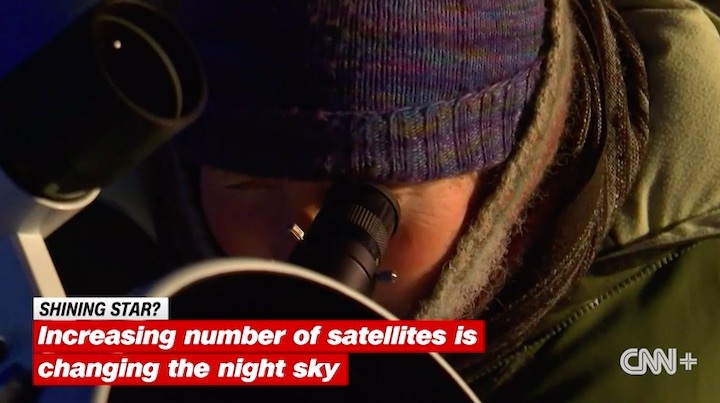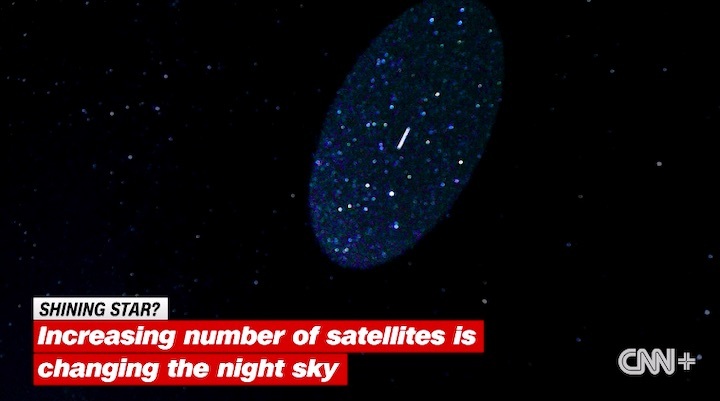"It's kind of like we're going through this transition (similar to) when the first cars were on the roads. A Model T would drive up the road and you'd run out to go look at it," Lawler said. "But now you live next to a giant freeway, full of cars. So that's kind of the transition that we're going through with satellites in the night sky right now."
It's the dawn of mega-constellations, tens of thousands of small satellites only about 300 miles (483 kilometers) above Earth, launched by private companies to provide global high-speed internet access.
Elon Musk's SpaceX is
responsible for roughly a third of all active satellites in orbit, more than any other company or country, including the US government.
SpaceX has already launched more than 2,000 satellites with plans to launch at least 42,000 more for its mega-constellation called Starlink. Other distant competitors include Amazon's Project Kuiper and London-based satellite company OneWeb.
While thousands of small Starlink satellites are problematic for astronomers, they're also providing much-needed internet access to people in rural or war-torn parts of the world.
Oleg Kutkov is a Ukrainian engineer and amateur astronomer who bought a Starlink terminal on Ebay in December to take apart for fun, never thinking he'd actually be able to use it in his apartment in Kiev. But when Russia invaded in February, Elon Musk activated Starlink service over Ukraine, and Kutkov has been using it as his backup internet service ever since.
"We are getting all the information from the internet about airstrikes, about enemy force movements. Should we hide, should we not hide? Can we go outside or not?" Kutkov said.
Kutkov said he used to side with astronomers like Lawler in thinking that the concerns about Starlink impeding observations of the cosmos outweighed its benefits, but Russia's invasion is changing his mind.
"I was 100% with astronomers," Kutkov said. "But in the current situation, when we really need internet connectivity, that's starting to be more important."
A wrench in asteroid detection
For Kutkov and other Ukrainians, Starlink is a lifesaver. But NASA is worried that second-generation Starlink, which could begin launching as soon as this month, could someday contribute to ending life on Earth as we know it.
NASA uses ground-based telescopes to hunt for potentially killer asteroids. In a letter to the FCC in February, NASA stated it "estimates that there would be a Starlink in every single asteroid survey image," which could have "a detrimental effect on our planet's ability to detect and possibly redirect a potentially catastrophic impact."
"Finding these asteroids well in advance of when they could hit the Earth is vitally important to our species' survival," Lawler said.
SpaceX did not respond to requests for a comment for this story, but the company addressed astronomers' concerns about satellites impacting observations in
a statement in April 2020.
"We firmly believe in the importance of a natural night sky for all of us to enjoy, which is why we have been working with leading astronomers around the world," the statement reads, and SpaceX has made changes by "adding a deployable visor to the satellite to block sunlight from hitting the brightest parts of the spacecraft."
But astronomers such as Lawler say those changes are not enough. As of now, there are no binding international rules monitoring mega-constellations, and SpaceX isn't waiting for regulators to catch up. It's launching, on average, about 50 new Starlink satellites every week.
"We're already seeing so many satellites now," Lawler said. "And there's about to be 10 times as many."
Quelle: CNN



